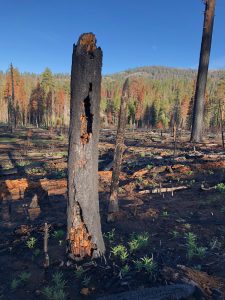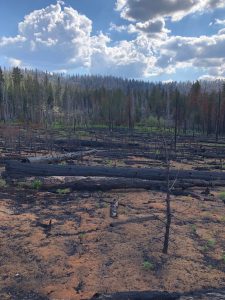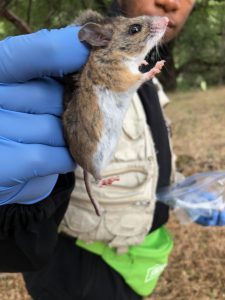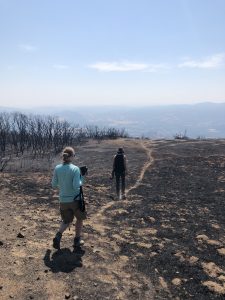By Kendall Calhoun, PhD Student
Fanning Flames over California

Mentioning you’re from California while abroad often leads to a handful of follow-up questions. Most of them revolving around the beach or Disneyland, both of which I rarely get to go to (unfortunately!). Most recently, however, California has become infamous worldwide for an increasingly urgent problem; wildfire. The impacts of recent severe fires have affected nearly every person/family within the state in some shape or form, as well as garnered the attentive eyes of countless others around the world. Native wildlife and landscapes also lay within a tenuous balance as encroaching megafires threaten to upend the natural stability established in these systems. Most ecosystems within California are fire-adapted, echoing back to deep co-evolutionary relationships between ecological communities and indigenous people who used fire to maintain important processes. However, recent global changes in climate, expanding urban development into wildland spaces and outdated policies in forest/fire management have created a perilous opportunity for many wildfires to transform into the immense megafires we’ve witnessed. The 2014 King Fire, 2017 Thomas Fire, and most recently the 2018 Mendocino Complex Fire (now the largest fire in recorded California history) are all examples of this process.
Megafires serve both as a threat to the balance of stability…and an opportunity to explore how the mechanisms of resilience work.
Arriving at grad school, my initial research curiosity pointed me towards exploring how biodiversity and community ecology contribute to maintaining the stability and resilience of the natural systems surrounding us. Megafires serve both as a threat to the balance of stability in many of these systems and as an opportunity to explore how the mechanisms of resilience work within human-altered ecological communities. California, renowned for its unique biodiversity, is covered in a myriad of habitat types and fire regimes. This past summer, I visited potential field sites to see what the current condition of wildfire means for the people, wildlife and future landscapes of California.
Yosemite: Illilouette Creek Basin

My first stop was the iconic landscape of Yosemite, tucked into the western slopes of the Sierra Nevada. I accompanied a collaboration of fire and wildlife ecologists from both UC Berkeley and UC Davis into the beautiful Illilouette Basin. This past fall (2017) a managed wildfire burned through an experimental plot established by the Stephens Lab at UC Berkeley. Charred black soot lined the steep path down to the basin and into our field site. The skeletal remains of short shrubs and hollowed trees remain as a reminder of recent events. In spite of this and unsure of what to expect, I was amazed to see the surprising amount of wildlife bustling through the area. Pairs of Mountain Bluebirds busily utilize the burned vacancies inside tress as they craft nests. Larger mammals, like deer and bears, also comb through the burned area.
This seemingly otherworldly landscape is more alive and vibrant than most would expect, an important reminder that fire isn’t a foreign phenomenon in these habitats and is intimately tied to existing natural processes. This fire in the Illilouette Basin is an important example of successful managed forest fire in action.
I was amazed to see the surprising amount of wildlife bustling through the area.
Naturally occurring fire was allowed to burn within certain parameters to parallel burnings of the forest in the past. The plan to move away from total forest fire suppression will hopefully promote a healthier and more diverse forest ecosystem.

Hopland: Hopland Research and Extension Center
My second stop on this trip was the Hopland Research and Extension Center (HREC), just off Highway 101 in Mendocino county. This initial trip was used to launch a pilot project exploring how managed burning as well as fencing may affect the abundance and diversity of rodent species on within human-altered landscapes. In the advent of this past summer’s River fire, part of the larger Mendocino Complex Fire, my current research direction has shifted towards assessing how the composition and movement of Hopland’s wildlife community responds post-fire. This also provides a critical

opportunity to assess methods of fire and land management for the grassland, chaparral, and woodland habitats common near the coast of California. These habitat types have been the source of some of the largest and most costly fires in recent California history, and come with their own management challenges unique from forest fires.
Over the upcoming year, I hope to establish an extensive biodiversity monitoring system to assess how many groups of species (large and small mammals, birds, and bats) respond to sudden fire disturbance over time. Potential projects here could elucidate better strategies in dealing with California brush fires as well as how best to support wildlife in these working landscapes that serve as an interface between humans and wildlife.